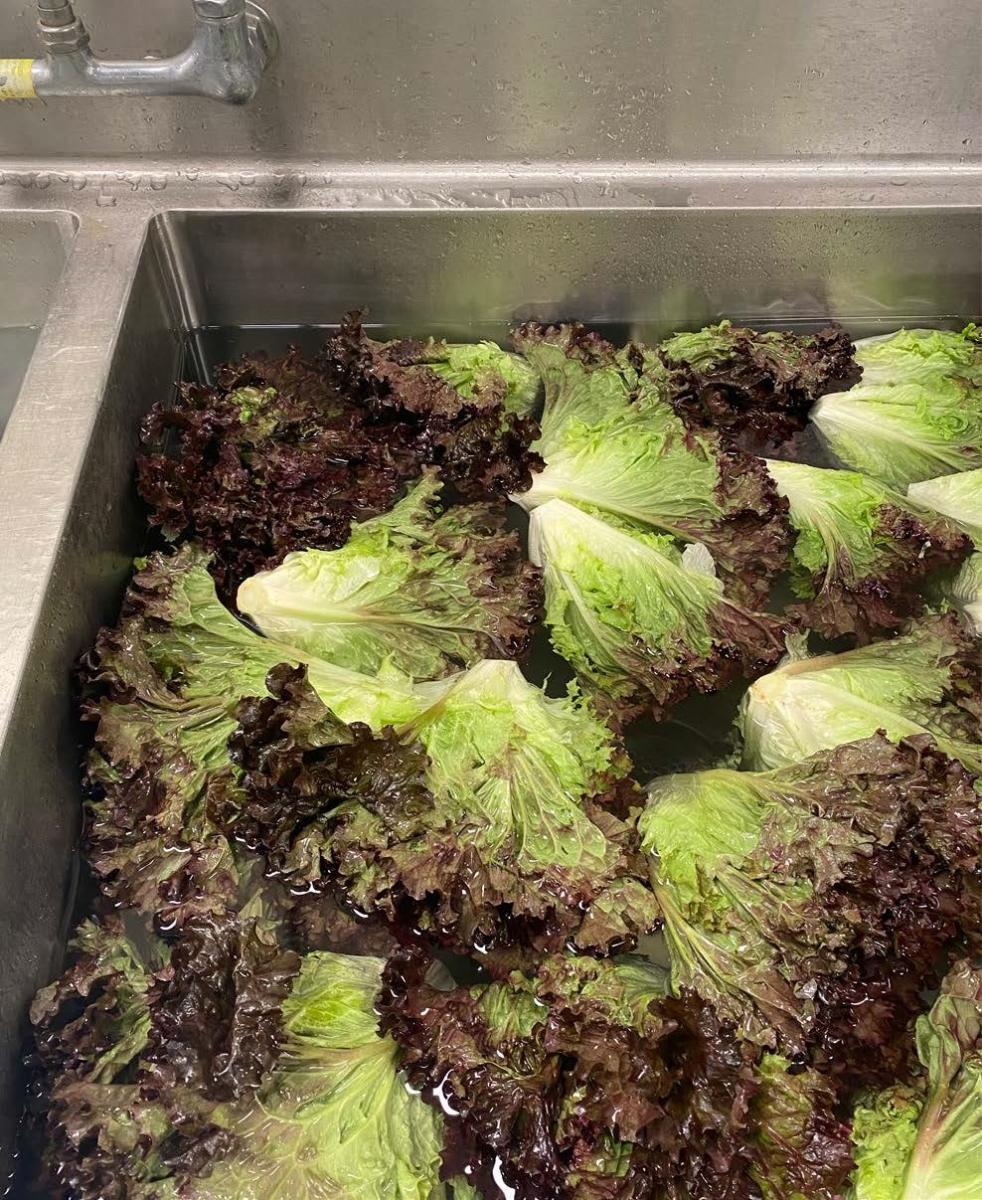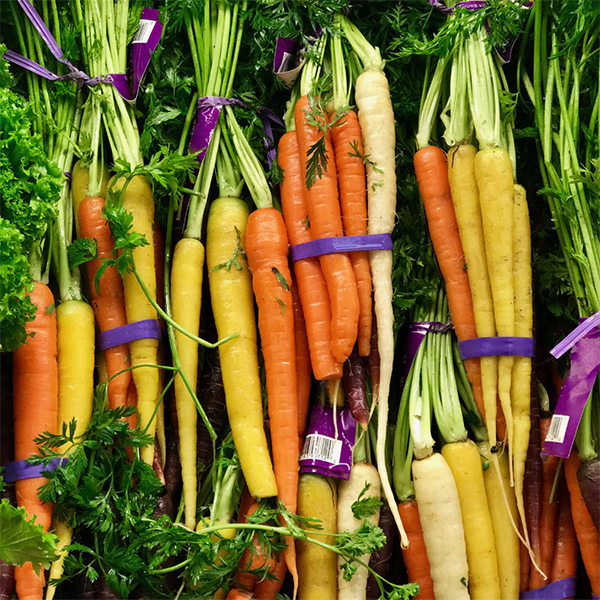Produce Cleaning and Sanitizing
- Always use clean bins for organic products. Bins must be washed and thoroughly dried.
- Use distinctive labels to differentiate organic and non-organic products. Different color backgrounds make it easy for the consumer to pick out the organic product.
- Scoops for bulk product bins should be designated separately for organic and non-organic.
- If bulk bin design allows product to fall onto other bins, do not stack non-organic product above organic products.
- If contamination does occur, the product must not be sold as organic.
Produce Receiving
Receiving organic produce is similar to receiving any other organic products. Follow the guidelines in Section 2 (Receiving) for receiving best practices to prevent commingling and contamination when receiving produce items.
- Always verify bulk products ordered match what is delivered and what is written on the invoice/bill of lading
- Always look for clear organic labeling and certifying agent seal or name
- Place any bulk item in a quarantine area that does not meet USDA labeling rules. Get missing information from the supplier.
Produce Storage at the retail establishment level (i.e. store level)
Non-organic and organic produce can be accidentally mixed. Proper labeling is key to prevent non-organic products from being mislabeled and sold as organic.
- Have separate storage areas for organic and non-organic products.
- Label organic and non-organic cold and dry storage areas.
- Non-organic produce boxes that have been crushed or damaged should be reviewed to make sure they do not pose a contamination risk to organic produce stored nearby.
- Organic products should never be stored below non-organic wet produce. There is a risk that pesticides or fumigants would be washed off the non-organic produce by the melting ice or water, and drip onto the organic product.
- Stacks of wet products must not have non-organic and organic products mixed.
- When storing large volumes of wet product on pallets, separate non-organic and organic produce with clear labeling.
- Always remove fumigant/sulfite slips from conventional produce when these are stored in the same cooler as organic produce.
- When stacking dry product, separation of products by non-organic and organic must be clear.
 Produce Preparation
Produce Preparation
- Tubs, counters, scoops and other items used to repackage or prep bulk produce must be thoroughly cleaned and rinsed between organic and non-organic products.
- Tubs, counters, cutting boards, knives and other items used to prep produce must be thoroughly cleaned and rinsed between organic and non-organic products.
- When prepping product in soaking or crisping water, organic product should not be processed in water used to process non-organic product. The tub or sink must be thoroughly cleaned, rinsed and filled with fresh potable water before washing or cooling organic produce. Non-organic produce may have residues that are washed off into the water and may remain on the sides and bottom of the sink or on the work area unless the area is scrubbed clean.
- Trays, buckets and other equipment used in displaying non-or
- Packaging materials used to pre-pack non-organic product must not be recycled to pre-pack organic product.
Labeling Individual Organic Produce
- Whenever possible, the organic produce should be individually stickered, twist-tied, taped, sleeved or packaged clearly with “organic” if similar items are sold that are not organic. By doing this, both the consumer knows what they are buying and the cashier knows what is being sold. This also helps prevent customer commingling of organic and non-organic produce.
- Organic produce stickers may be used and are available from a wide variety of sources.
Labeling in the Produce Department
- Keep display labels current when racking new produce. Verifying that all display labels are correct is important to instill consumer confidence in the organic products they are purchasing.
- Consumer confidence in organic production is enhanced when they are made aware of the organic certification system.
- If the store only sells certified organic produce, a large placard in the department may be used to declare that whenever
- the consumer sees the word “organic” this signifies the product has been inspected and approved by a recognized independent third-party organic certifying agent.
- “Organic” twist ties, stickers and tape should also be available to help the consumer locate the organic products.
- Wet and dry displays should be as consistent as possible in their presentation, to avoid confusion by customers and employees stocking the shelves. Aiding consumers who are looking for the organic produce can help the retailer in their marketing of the organic fruits and vegetables.
Packaging Materials
- Only new or materials recycled from organic product can be used when packaging organic produce.
- Unless thoroughly cleaned and rinsed, no packaging that previously held conventional products should be used. Plastic totes may be used if cleaned. Cardboard boxes should never be reused.
- All packaging materials must be food grade, assuring that dyes and fumigants do not pose a risk. You can ask your supplier to verify that no fumigants are used in your packaging.
Packaging Display Guidelines
- Always use clean bins and shelves for organic products. All display areas must be washed and thoroughly dried, especially when non-organic produce has been previously displayed.
- Use distinctive labels to differentiate organic and non-organic products.
- In display areas, organic produce should not touch non-organic produce. Organic produce should not be placed below wet or dripping non-organic produce. Retailers should work to prevent customer commingling of organic and non-organic produce.
- If contamination does occur, the product must be sold as non-organic.
Resources Recommended for Produce Departments
- Sources of “Organic” tapes, twist ties, and stickers
- Sources of organic promotional materials
- Sources of “Organic” signage










